J. Puccini opera "Tosca"
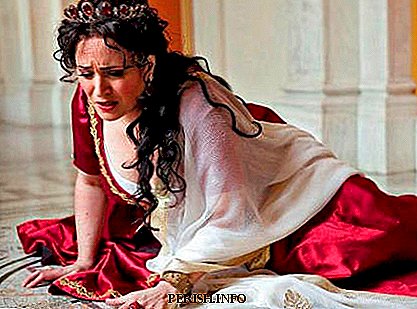
As the basis of the libretto for his opera "Tosca", J. Puccini chose the play of the same name by V. Sardu. This great story of love and betrayal, dressed by the Italian composer in the operatic genre, has not ceased to break the hearts of people all over the world for more than a century. The performance is so loved by the public that today it is the most repertoire in the world.
Summary of the opera Puccini "Tosca" and many interesting facts about this work read on our page.
Characters | Vote | Description |
| Floria Tosca | soprano | famous singer, actress, loyal and jealous |
| Mario Cavaradossi | tenor | Republican painter |
| Baron Scarpia | baritone | chief of roman police |
| Cesare Angelotti | bass | former Roman consul Republican, prisoner |
| Spolette | tenor | police scammer |
Summary of "Tosca"

The plot of the opera unfolds in Rome at the very beginning of the XIX century. In the center of the maelstrom of events is the love of singer Flora Tosca and artist Mario Cavaradossi.
Trying to save his friend, once the Roman consul Cesare Angeletti, from prosecution, the artist Cavaradossi hides him in the well of his country house. Scarpia, the police chief, knows where the criminal is hiding. To seize him, he watches the beloved Mario Flora Tosca, which leads him to the shelter of the rebel. But instead of a prisoner, the artist ends up in jail. To save her lover from torture, the girl has to give out the shelter of Angelotti. But the merciless police chief orders Kavaradossi to be killed. Flora can save him if she gives her love to a villain ... She has no choice but to agree to this step. But the policeman is not going to save the artist, he just "pretends" that the shooting will be unreal. Having received documents for escape from Scarpia, Tosca kills him.
At dawn, Flora runs to her lover and tells about the upcoming escape. He also asks to fall "as an actor," when he hears the shooting of "unmarried." The soldiers raise their weapons, the shot rattles, Cavaradossi falls. The girl rushes to her beloved, because the dramatization is over, and they are free! And just seeing the bloody body, understands what really happened. Meanwhile, the soldiers are already running towards the killer Scarpia. Tosca is doomed ...
| Duration of performance | ||
| I Act | Act II | Act III |
| 45 min. | 40 min | 30 min. |
A photo:
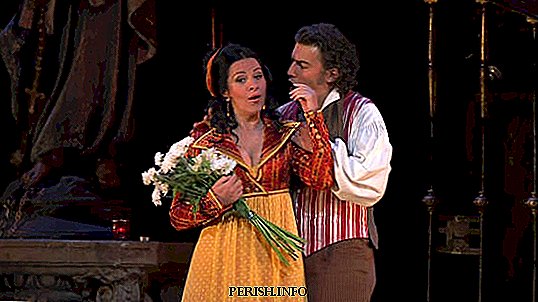

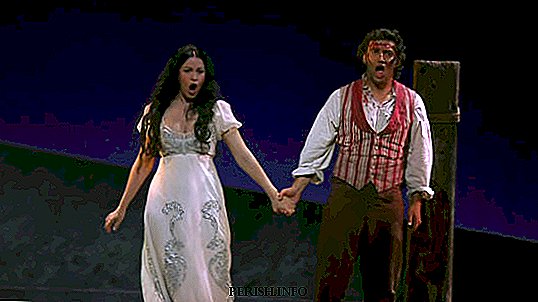
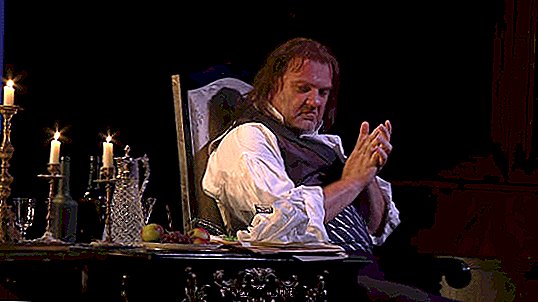
Interesting Facts
- Tosca is an opera with one of the most unusual premiere stories. The first show of the performance made a lot of noise. It all started with the fact that the theater hall was flooded with police. Someone reported that a bomb was laid in the hall. After her unsuccessful search, the performance still began. As soon as the first chords of the orchestral introduction struck, shouts were heard in the hall. Their cause was not the threat of an explosion, but a violation of the Roman theatrical tradition: it was customary in the city to begin performances late. The audience was going to just with this calculation, but this time the conductor began the opera on time. The spectators who had just arrived were indignant and demanded to begin the performance from the beginning. Conductor and soloists had to make concessions. Well, what else can you do!
- In one performance, in the scene of the fall of Tosca from the fortress wall, the mattresses and pillows were replaced by a trampoline, and before the curtain closed, the singer managed to fly several times over the wall.
- Austrian singer Leoni Rizanek sang a prayer Tosca on her stomach. She also did not believe that Tosca could hide the knife in advance, and in the versions of the play with this singer a glass of wine was broken, and a fragment was stuck into Scarpia’s neck.
- Montserrat Caballe got into the Guinness Book of Records as the only singer who sings the last four notes of the Vissi d'Arte prayer in one breath.

- Ramon Vinay became famous for starting his career as a tenor, and graduating with bass. In the opera "Tosca" he performed the parts of both Cavaradossi and Scarpia.
- According to the testimony of biographers Puccini, V. Sardu agreed to use his compositions for the basis of the libretto thanks to music - the composer performed fragments of his operas for the playwright, and the music conquered him.
- One of the librettists insisted on changing the final. He proposed to abandon the death of the protagonist and replace the scene of her fall from the roof of the castle to madness. But the playwright did not give in to persuasion: the girl should rush down from the parapet of the Castle of the Holy Angel. He called the following’s main argument for such a final — it is not good to delay the viewer with a scene of insanity just before the end of the performance. And then the maestro intervened in the dispute - he took his copy of the libretto, opened the final scene and showed his mark "coat aria" to those present. So he called the final number, which not all viewers will hear - because by this time most of them will leave the hall and rush for outerwear to the cloakroom. This made Sardu very merry, and he entrusted the reworking of the last scene to the composer, whom he called the "man of the theater", who knows the preferences of the public better than others.
- The first performance of the opera, the audience perceived quite cold. One of the reasons for such a reaction was called non-original melodies and ... sound and scenic sadism. In this case, the audience did not like the scene of torture.
- Puccini tried to convey the atmosphere of Rome at the beginning of the 19th century in every possible way in his work. Especially for this, with the help of the servant of the church Don Panikelli in his opera creation, he recreated the true sound of the bells of St. Peter's.

- In one of the performances of the Cavaradossi part, the great Enrico Caruso sang. The composer’s acquaintance with this genius was very interesting. Puccini did not represent his vocal abilities, and therefore asked to sing. As soon as Caruso completed the performance of the hero's first aria, the maestro asked who sent him to him, wasn’t Hasn Allah himself?
- In the XX century in Russia, the opera "Tosca" was titled "The Struggle for the Commune". For the creation of the great Italian, a new libretto was written; N. Vinogradov and S. Spassky were its authors. The action was transferred to France at the end of the XIX century, where the main heroes were the revolutionary and the communard.
- Because of the specifics of the plot, "Tosca" is often used in various works related to the work of special services and detectives. Among the most famous films that mention this work or sound music from it are "Deja Vu" (1989, dir. Y. Makhulsky), "Surrogates" (2009, J. Mostow), "Pink Doll" (1997, In Olshvang), "Stalingrad" (2013, F. Boncharchuk), "22 bullets. Immortal" (2010, R. Berry), "Method" (2015, Y. Bykov). Curiously, the plot twists and turns of an immortal opera masterpiece is very organically woven into the quests of some computer games, for example, "Hitman: Blood Money" (2006).
Popular arias from the opera "Tosca"
Cavaradossi's aria "E lucevan le stelle" - listen
Baron Scarpia "Va Tosca! Te Deum" - listen
Aria - Tosca's prayer "Vissi D'arte" - listen
Cavaradossi aria "Recondita armonia" - listen
The history of the creation of "Tosca"
The play "Tosca" was written by V. Sardu especially for one of the most prominent actresses in the entire history of the theater - Sarah Bernard. With this performance, J. Puccini met in the Milan theater in 1889, and at the same time he had the idea to write an opera on this work. However, in those years he was only a novice composer, and therefore did not count on the attention of the famous playwright. That is why all negotiations with the author of the play Puccini ordered to lead his publisher Giulio Ricordi. But everything was complicated by the fact that the maestro was not the only one who wanted to write an opera on the subject “Tosca” - the libretto became interested in the play as a source. G. Verdi and A. Franchetti. As a result, the honor of creating an opera fell to the latter, but thanks to Ricordi’s insistent recommendations, he had to abandon this undertaking.
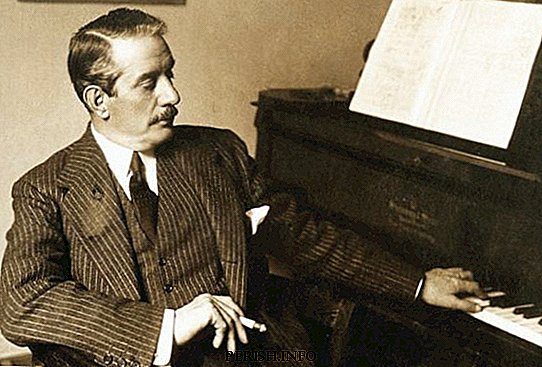
Directly working on Puccini's opera began only in 1896. At that time he was already well known, his opera creations "Bohemia"and"Manon Lesko"already had considerable success. Now the composer has already highly appreciated his chances of favoring Sardu. Indeed, he managed to hold several fruitful meetings with him. L. Illika and J. Djakoz were engaged in writing the libretto; He held active negotiations with the author and insisted on some changes in the plot - so he accelerated the action, cut some minor plot lines and made changes to the fate of the main character.The opera was completed in the autumn of 1899 .
First productions
The premiere play "Tosca" was held in the famous Roman Theater "Constanzi" on January 14, 1900. The main actors were Harikley Darkle (Floria Tosca), Enrico de Marci (Mario Cavaradossi), Eugenio Giraldoni (Baron Scarpia). At the conductor's stand that evening was the composer Leopold Munyon. The debut production caused an unprecedented excitement - in the hall was the first person of the state - the Italian Queen Margarita of Savoy, who was accompanied by the majority of government representatives. The compatriots of the composer, P. Mascagni, F. Chilea, and J. Sgambatti, did not miss the opportunity to hear opera. After the performance, Puccini was summoned to the stage several times, but he was unhappy with the reaction of the audience.

In the spring of 1900, the Milan audience was able to appreciate the Milan audience - it was staged on the stage of the legendary La Scala. The conductor of the opera was the unsurpassed Arturo Toscanini.
During the first year of its existence on the stage, this creation by Puccini was staged not only in all the major Italian theaters - they were interested in world opera scenes. The Russian theaters have not become an exception - the first productions of "Tosca" were held at the end of 1900 in Odessa.
This opera PucciniPerhaps the most sensual and sincere of all he wrote. Many consider it a real melodrama, the best example of the genre.

Leave Your Comment